Reviews
Gojira, Mosura, Kingu Gidora: Daikaiju Sokogeki / GMK
Shusuke Kaneko
Japan, 2001
Credits
Review by Leo Goldsmith
Posted on 25 February 2013
Source YouTube
Categories The Compleat Godzilla
At this point, new beginnings should come as no great shock in the Godzilla series. So, when Godzilla, Mothra and King Ghidorah: Giant Monsters All-Out Attack (or GMK for short) begins with a character explaining that Godzilla has attacked Japan only once, in 1954, we shouldn’t terribly surprised. But, Jesus—really? The Godzilla multiverse seems to be expanding at an alarming rate. Of course, passing mention is made of another monster that attacked the East coast of America (the “American experts” think it was Godzilla; some of the Japanese think otherwise). But GMK starts the series afresh—with a degree of self-consciousness, for sure, but also, for once, the inventiveness and resourcefulness to justify itself.
Pointedly, this is a Japan that has largely forgotten Godzilla—both, we are to believe, as a symbol and as a profitable franchise. When an ersatz “news team” (called, amusingly, BS Digital Q), headed by reporter Yuri, sets out to make an Unsolved Mysteries-esque cheap sci-fi series masking as docudrama about Godzilla (mainly because kids like stories about monsters and stuff), they have to fake the details and don’t even recognize the roar of Godzilla when they hear it. Of course, they stumble onto the real thing, but their discovery is predictably discredited… until it’s too late.
But this is also a Japan that has, in other ways, forgotten its values and traditions. Hordes of shitty teenagers run rampant throughout the countryside, recklessly riding mopeds and raiding convenience stores at night. One such group, taking a rowboat out on a lake in order to drown a dog, is capsized and killed, then wrapped in giant cocoons.
The past, it seems, is making a comeback.
This pervasive amnesia is itself a reason for Godzilla’s return—that is, not just their amnesia about Godzilla himself, but also about an entire history of atrocities inflicted on humanity throughout the Asia-Pacific region. This, at least, is the diagnosis of old man Isayama, a sort of Godzilla prophet who seems to be the only one to remember the days of the ancient monsters. He is the only one left to explain that Mothra, King Ghidorah, and Baragon (who doesn’t get top billing in the title, despite being Godzilla’s first opponent in the film) are guardian monsters, existing to protect the homeland—indeed, the homeland and decidedly not the nation. As Yuri explains to her father, the tragedy of those Japanese soldiers who lost their lives serving their country can’t match that of the many killed under Japanese imperialism in the first half of the 20th century.
There’s much revisionism here, of course. Most notably for kaiju enthusiasts is the recasting of Mothra, Baragon, and King Ghidorah as a heroic trio of collaborators in the collective fight against Godzilla. But there’s a complete reversal of the series’ original symbolism, too: here, Godzilla ceases to be a metonym for the American atomic bomb, and now refers (however obliquely) to Japanese war atrocities, conveying an explicitly anti-nationalist message that subtends GMK’s emphatically darker tone. This is the sort of film in which someone mentions how cute Baragon and is then instantly crushed to death by wreckage. No more unspecific, wide-shot devastation here—Godzilla kills a lot of people, crushing them, swatting them with his tale, vaporizing them with his breath. When this yields the all-too-familiar sight of an atomic mushroom cloud, an unmistakable syllogism is established: nuclear punishment is the direct inheritance of Japan’s often-elided history of violence.
This is a fascinating innovation on GMK’s part, and a gutsy one, but the film nonetheless persistently maintains its faithfulness to its predecessors with an endless parade of references and in-jokes. The best of these, seen just before Godzilla’s first big fight with Baragon, is a recreation of the monster’s first closeup. But there are countless more: Yuri’s dad’s flashback of Godzilla’s attack in the original film, which he witnessed as a child; a quick shot of a poster featuring the Lucky Dragon, the radioactivity-contaminated ship whose story inspired the original Godzilla story; and even a cameo by former Cosmos Twins Ai and Aki Maeda, who are briefly seen (as mere Japanese citizens) gazing up as Mothra flies overhead.
But this is just gravy. The meat, undeniably, lies in the monster battles, which are among the best in the entire series. Blood spurts, limbs fly, and heads get stomped. There’s a mass and heft to the monsters here that only the best kaiju movies achieve, and all of the real death and carnage - for humans and monsters alike - raises the stakes considerably. GMK ups the ante for Godzilla reboots - and, indeed, franchise reboots in general - and it does this both with a knowing wink and a conscientious nod to the serious themes that inspired the series in the first place.
More The Compleat Godzilla
-

Godzilla
1954 -

Godzilla Raids Again
1955 -
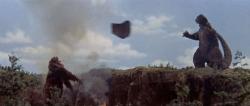
King Kong vs. Godzilla
1962 -

Mothra vs. Godzilla
1964 -

Ghidorah, the Three-Headed Monster
1964 -

Invasion of Astro-Monster
1965 -

Ebirah, Horror of the Deep
1966 -

Son of Godzilla
1967 -
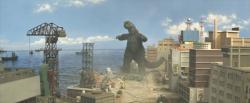
Destroy All Monsters!
1968 -

All Monsters Attack
1969 -

Godzilla Vs. Hedorah
1971 -

Godzilla vs. Gigan
1972 -

Godzilla vs. Megalon
1973 -

Godzilla vs. Mechagodzilla
1974 -
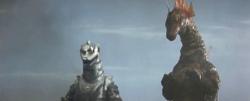
Terror of Mechagodzilla
1975 -

The Return of Godzilla
1984 -
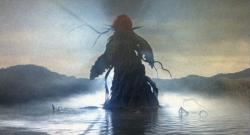
Godzilla vs. Biollante
1989 -
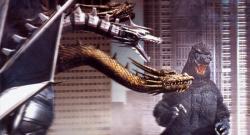
Godzilla vs. King Ghidorah
1991 -

Godzilla vs. Mothra
1992 -

Godzilla vs. Mechagodzilla
1993 -

Godzilla vs. SpaceGodzilla
1994 -

Godzilla vs. Destoroyah
1995 -

Godzilla 2000
1999 -
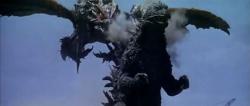
Godzilla vs. Megaguirus
2000 -
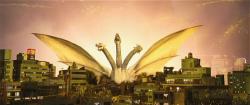
Godzilla, Mothra and King Ghidorah: Giant Monsters All-Out Attack
2001 -

Godzilla Against Mechagodzilla
2002 -

Godzilla: Tokyo S.O.S.
2003 -

Godzilla: Final Wars
2004
We don’t do comments anymore, but you may contact us here or find us on Twitter or Facebook.



